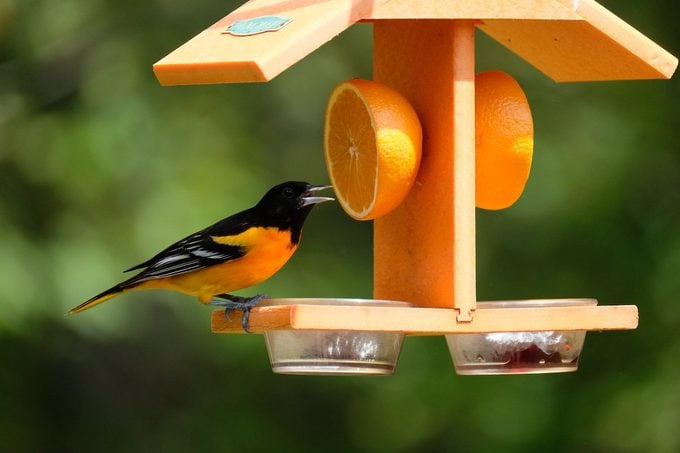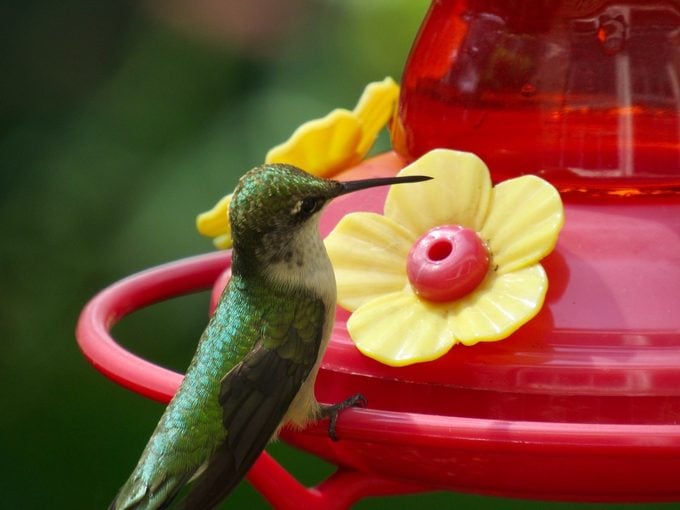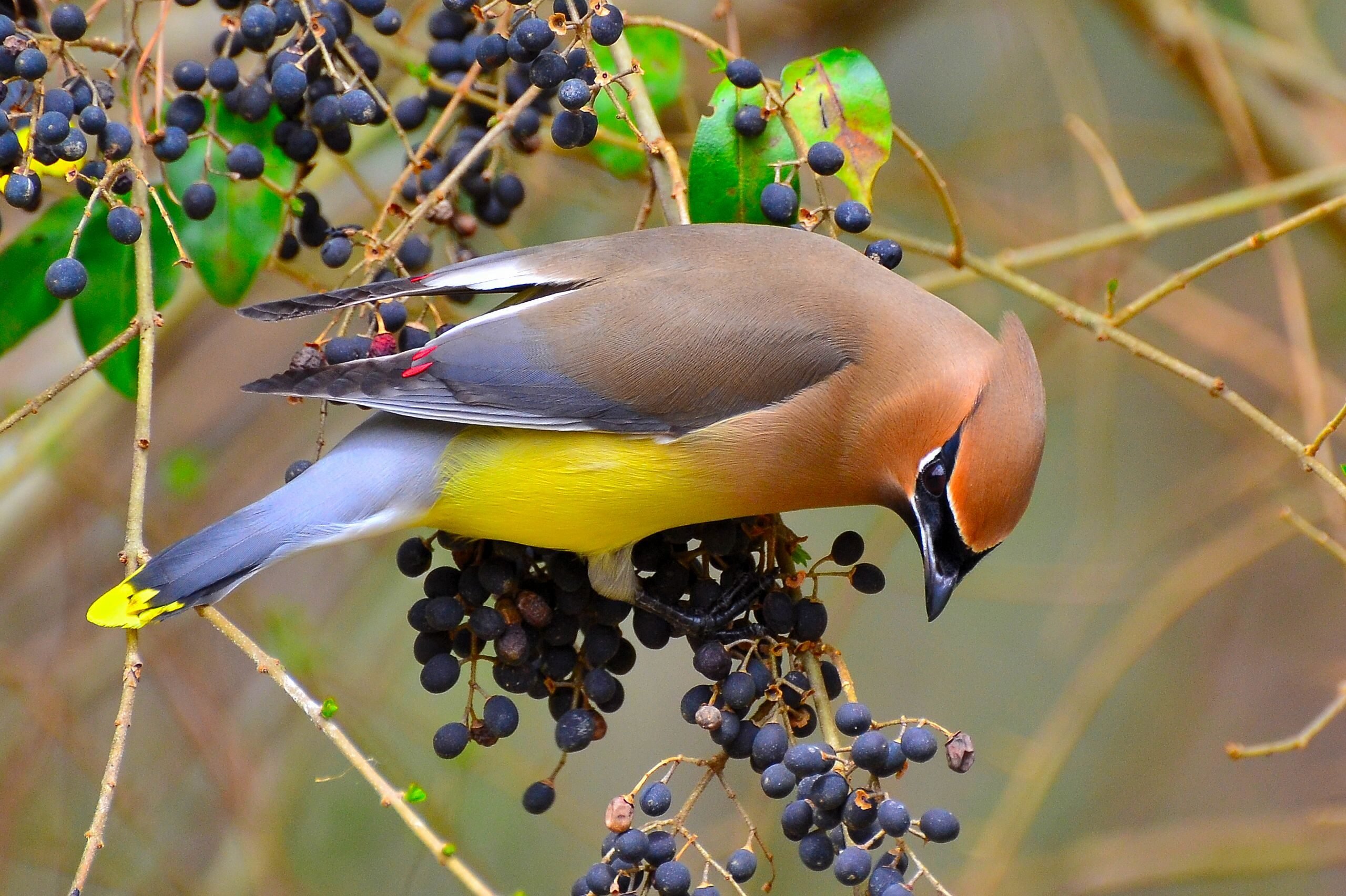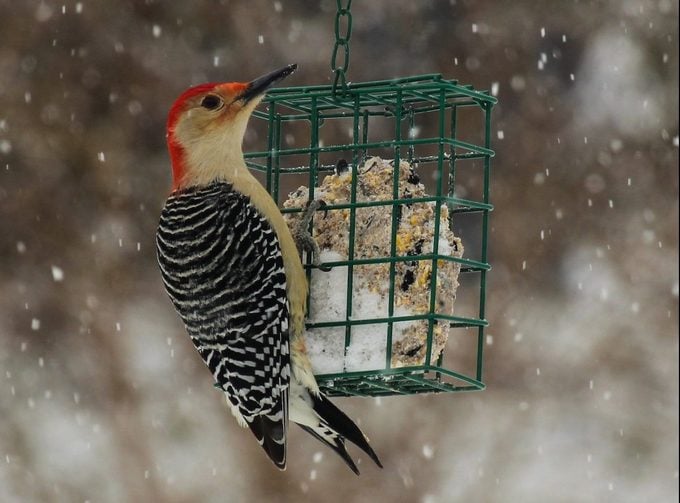How to Feed and Attract Birds All Year Long
Updated: Jan. 31, 2022
As the seasons and weather conditions change, switch up what you're serving in your bird feeders to attract more birds to your backyard.
Our editors and experts handpick every product we feature. We may earn a commission from your purchases.
I tend to notice the changing of the seasons by bird activity, not weather. When I see the first migrating sparrows return to my hedgerow, I know spring is on the way. And when juvenile birds are fluttering their wings and begging for food, it’s summer. These sightings can be huge hints that it’s time to make some changes to your feeding routine. Follow this guide and you’ll have a robust bird presence in your yard all year-round.
What to Feed Birds in Spring

With the arrival of spring comes the return of exciting migrating species. As these spring migrants start to arrive, you should enforce the spring-cleaning rule. Be honest—you didn’t keep your feeders exceptionally clean over the long winter, did you? Cleaning your feeding stations regularly will help cut down on disease transmission and deter unwelcome visitors like raccoons.
As temperatures heat up in most of the country, it’s also the best time to hang nectar feeders for orioles and hummingbirds. These backyard favorites reach the Gulf Coast by late February or early March and have made it northward by Mother’s Day. You’ll have the best success attracting orioles if you offer grape jelly or oranges in addition to sugar water. Orioles aren’t the only ones that have a sweet tooth…er, beak. Gray catbirds, northern mockingbirds and American robins will also make special appearances at feeders in the spring.
Lastly, don’t shy away from mealworms in the spring. They tend to be bluebird magnets, so if they aren’t on your menu, give them a try. If you’re not ready for live mealworms yet, buy dried ones. You might be surprised to see woodpeckers and chickadees stopping for mealworms, too! Check out our guide to feeding mealworms to birds.
What to Feed Birds in Summer

Nesting birds and fledglings steal the spotlight in summer. The antics of young birds crash landing in the backyard will make anyone smile. It’s easy to lure nesting birds to your yard by providing nesting material. Plenty of species use natural materials to line their nests. Learn about the different kinds of bird nests and how to spot them.
It’s important to be selective about what you offer, though. Most synthetic materials (and some natural ones, like cotton) can actually do more harm than good, especially when they’re wet. Although commercial nesting material blends are available, you can create a buffet of natural materials for the birds by gathering up twigs, grasses or other plant material from your own backyard. Throw some of your pet’s hair in there, too. Some folks just toss materials around the backyard, while others use suet cages to hold the nesting material in place. Here’s how to prepare for a successful nesting season.
Another summer attraction is water. A birdbath is a nice touch, but moving water is even more irresistible to birds. Try adding a spinner, bubbler or fountain to your birdbath to see if it attracts any new guests. Water misters are also an option—learn how to make your own. Hummingbirds have been known to dart in and out of the fine spray, preferring that to traditional birdbaths. And keep those hummingbird feeders full! Here’s the sugar water recipe.
When it comes to serving food in summer, don’t rule out suet. No-melt suet cakes are out there and they typically have more cornmeal in them, so they tend to be less of an oozy mess for those in the warmer climates. Nuthatches and woodpeckers will enjoy them even in summer.

What to Feed Birds in Fall
Autumn is a season of movement for many birds. Migrants are headed toward their wintering grounds, but even local birds shift around in their ranges as they settle in for winter.
It’s also harvest season in your garden, so let the birds do a little harvesting of their own. Leave your sunflowers and coneflowers alone and let the birds eat seeds straight from the source. Berry producers like dogwood, currant or bayberry can also attract fall birds. A flock of cedar waxwings might even devour all of the berries on your trees and shrubs in one quick, fall visit. Check out the top 10 berry plants birds love.
As summer turns to autumn, many people take their hummingbird feeders down. Keep them up for a bit longer and you might be rewarded with a rare treat. Hummingbirds sometimes show up in unexpected places during fall migration. Rufous hummingbirds, a western species, are increasingly seen in the Midwest and East at this time. Other western and southwestern species like black-chinned, Anna’s, Costa’s and broad-billed have been reported far to the north and east in the fall. A good rule of thumb is to keep your feeder up for at least two weeks after you’ve last seen a hummingbird. Psst—check out 13 questions about hummingbird feeders answered by the pros.

What to Feed Birds in Winter
Even in the harshest of winters, birds can find plenty of natural food sources. But they will regularly hit up backyard feeding stations for
a steady food source. Follow these simple tips to attract winter birds.
Foods that are higher in fat can give birds an extra boost. Try offering peanuts, either in the shell or without. In most feeders you can mix unshelled peanuts with sunflower seeds. Or you can feed peanuts separately. While the chipmunks are curled up for a long winter nap, you can bet the squirrels will be interested in peanuts all winter long, too. (And so will the jays, chickadees and woodpeckers.)
Suet can be offered year-round, but in winter it’s especially popular with woodpeckers, nuthatches, titmice and chickadees. Even odd visitors, like pine warblers, may stop in to sample suet. Get answers to common questions about feeding suet to birds.
Feeding backyard birds can bring year-round enjoyment to your life. It’ll only take a short time for you to be more in tune with the changes happening around you. These seasonal patterns will become familiar and you’ll find yourself no longer marking the seasons by the weather, but instead by the birds.

